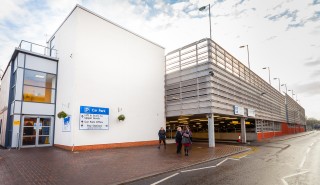Laboratory Medicine
General Information / How to Take Laboratory Samples
All procedures carried out on a patient need the informed consent of the patient. For most routine laboratory procedures, consent can be inferred when the patient presents himself or herself with a request form and willingly submits to the usual collecting procedure, for example venepuncture. It is assumed that when a sample is sent to the laboratory, the clinician responsible for the care of the patient has obtained the appropriate and valid consent for the test, storage and sharing of the patient's information with the relevant Health Care Professionals to generate the result so that the laboratory is not required to confirm or document consent.
How to Take Laboratory Samples
For information on how to take a blood sample: Click Here
For information on Microbiology specimen collection Click Here
For further information on Histology specimen collection Click Here
For information on Cytology specimen collection including seminal fluids and sperm samples: Click Here
REMEMBER if in doubt contact the appropriate department.
Sample Storage Before Transport
All samples should be dispatched to the laboratory as soon as possible after collection to ensure best turnaround times and most accurate results. It is highly recommended blood samples should arrive in the laboratory within 24 hours of collection – the laboratory may not be able to process samples received after this time. Overnight storage of blood samples before dispatch to the laboratory is not recommended and actively discouraged.
For advice on sample storage to minimise deterioration Click Here
Web Page 28 Reviewed 22/06/20
Advice for Requesters - Cervical Cytology
Laboratory Information Management System
How to Send Samples to the Lab
Advice for Requestors - Immunology
Advice for Requesters- Microbiology
Guidance on test interpretation- Clinical Biochemistry
Transportation of Samples and Postage
High Risk/Danger of Infection Samples
Request form and specimen labelling






